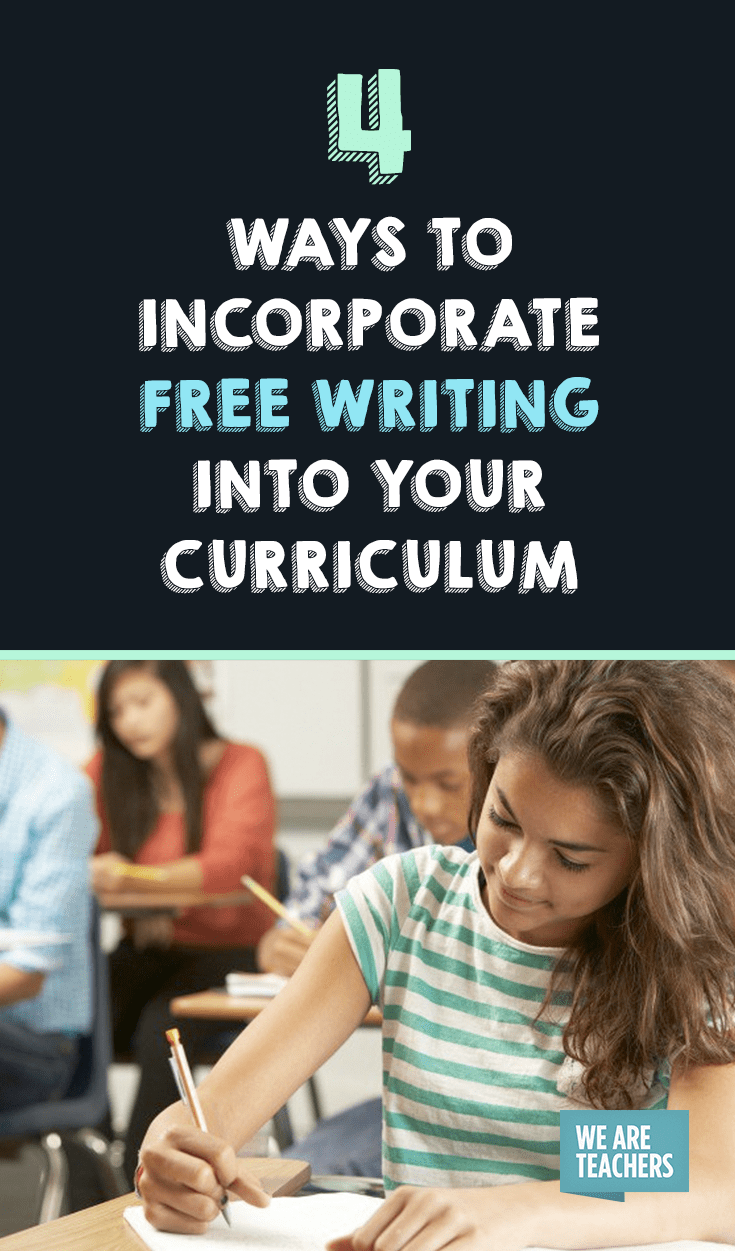Free writing is a magical thing. It means a constant stream without regard for grammar, spelling or word choice. It is focused, informal writing time that will benefit your student writers in many ways, including developing writing fluency and critical thinking. Free writing can also be a wonderful remedy for writer’s block.
I’ve been so impressed with the ways free writing has helped my students over the years that I’ve even written an ode to free writing and all of its incredible benefits.
Here are four great ways to use free writing with your students:
1. As a pre-lesson brain dump
Prompts like, “Write everything you know about cells” or “What are your associations with France” get students digging in and recalling all of their prior knowledge. While lists or brainstorms are also effective for this kind of activity, there is something about writing that really gets things flowing.
2. For getting students connected to a topic
In my classes, the difficult sells are the older texts. Students often think that their lives have nothing to do with those of servants in Shakespeare’s time or married women in the nineteenth century, but by free writing on a topic or issue, I get them thinking about the bigger questions that unite people everywhere and in all times. So I might ask a question such as “Why do people oppress others?” or “What does progress mean to you?”
This works well for other subjects too. When you think about the big ideas—power, community, balance, change—they are what ultimately connect people and what connects students to the material.
3. For relating life experiences to a topic
I use write-about-a-time-when-you… prompts as another way of connecting students to the material before we get into the specifics. In this case, it’s about looking at their own life experience in order to make those connections to the material.
Any time that life experience is relevant to the content or bigger ideas of the lesson, it’s helpful to bring it up; that way, students start to see the relevancy of the content before they’ve even started.
4. For bringing a lesson together
The end of the lesson is a great place for students to pause for three or five or ten minutes to write what they have learned. I often notice that the pieces don’t fully come together for some students until they write through the topic. For an ELA class, this usually means a prompt like “What point does the poem we read make about why people oppress each other, and how is that point similar or different from what you wrote at the beginning of class?” but for another subject, it could be something like, “How do the parts of the cell work together to grow?” or “How did all of the events of 9/11 change the country’s views on immigration?”
Possibly the most magical thing about the free write is that quick two or three minutes when it clicks and all of the students in the room understand the question and have started writing. You can just see them thinking and learning and realizing what they know and don’t know.
And while getting a little peace in the classroom is a bonus, it is one that is surely welcome by any teacher.
Have you incorporated free writing into your classes? What questions do you have about teaching literacy?


